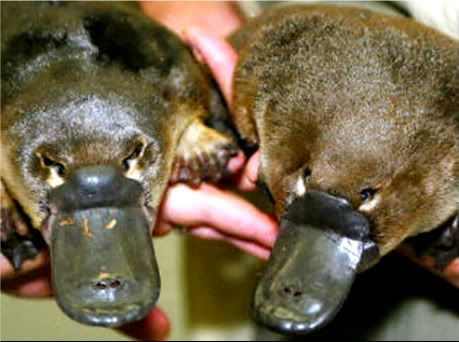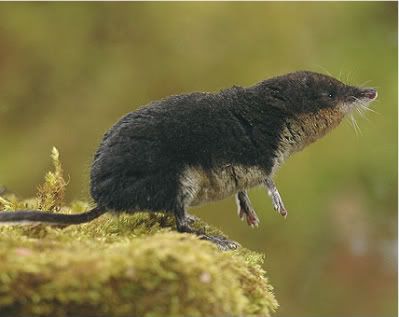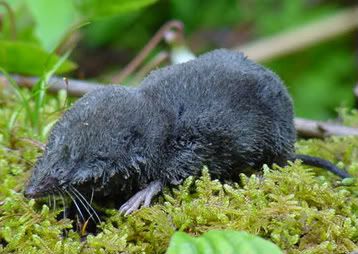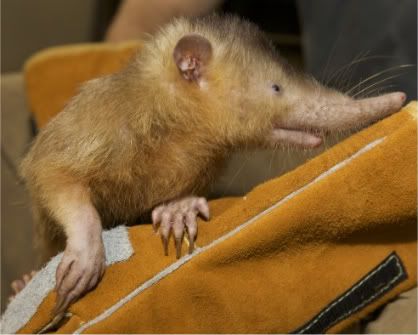Sharks have been one of my favorite creatures for a long long time.
They are unusual, come in many different shapes and sizes and have
lasted through several different extinctions.
I first got into sharks sometime around age 8 or so when I decided I wanted to be a Marine Biologist. The library at NOAA where my father worked had many great books on Marine Biology *obviously*
and I spent my summers looking to the ocean.
Quickly I discovered my undying passion for Sharks and their many forms.
Also- Around that same time, I learned of the last major shark discovery: the Megamouth
shark. (discovered Nov. 15th 1976)
This was the first picture I saw:

I wanted to swim with these gentle giants. Touch their rough skin.
Then and there I vowed never to eat a shark.
New sharks are being discovered all the time! In these Islands near Papua New Guinea and Indonesia, they have recently discovered two new Wobbegong shark species- *see pics below*
This is a picture of the Raja Ampat Islands- What I wouldn't give to spend a month there!

Everyone fears sharks- but not all *in fact most sharks* are not dangerous.
See?
Kids petting a nurse shark! (which have actually bitten humans, but never killed.)
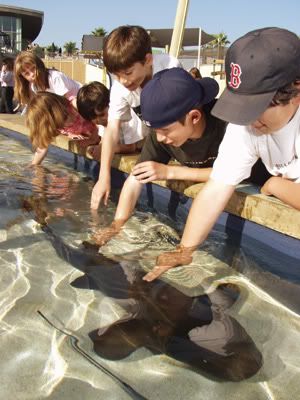
Also- They are one of the only animals that (very) rarely suffers from cancer.
here is some info on that:
National Geographic Articleand here is a website that is a good resource for more shark information:
ReefQuest Center for Shark ResearchI would like to introduce you to some of my favorite friends (maybe there is a shark you've never heard of?:
Cigar Shark- This is the smallest shark. It fits into the palm of your hand and lives very deep in the ocean.
cute!

The Goblin Shark:
Deep sea dweller... Only a face a mother could love. Extremely rare, unprotected shark. It is the only shark in the family Mitsukurinidae- Some of it's closest relatives are in the fossil record.
One was caught on the Australian coast with two new species of tape-worm found inside it's body. wow.
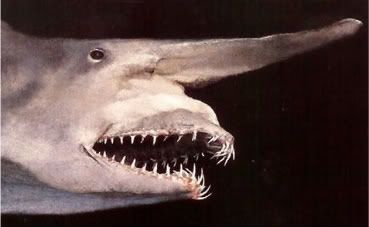
The Frill Shark:
Frilly! Also known as the Eel Shark- It's depth ranges from 100- 1,300 meters below sea level.
They have a life span of roughly 25 years... They eat squids, carrion and small fish.
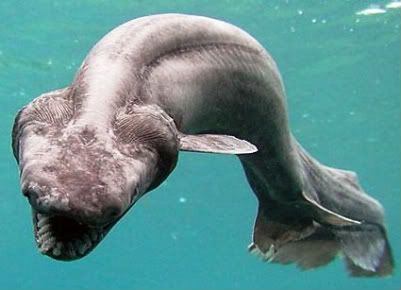
Hammerhead Shark:
These creatures actually gather in spots and sometimes swim in schools. The wide nose detects subtle electrical current put off by other animals- assisting in finding hidden prey.
It's mouth is relatively small even though it is quite fierce, making attacks on humans rare and not fatal. *33 attacks since 1500's and no deaths*
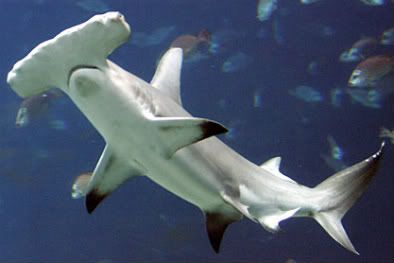
Crocodile Shark:
Very secretive non harmful sharkie!
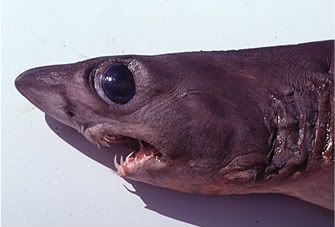
Saw Nose Shark:
They eat small fish and crustaceans. Very prehistoric looking!
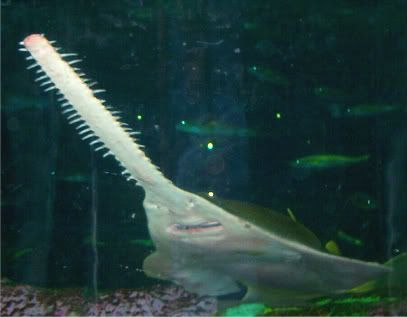
Whale Shark:
The largest shark in the ocean is also the most gentle. It is a filter feeder living only on plankton.
It can live up to 70 years, and grow to 40 feet in length.
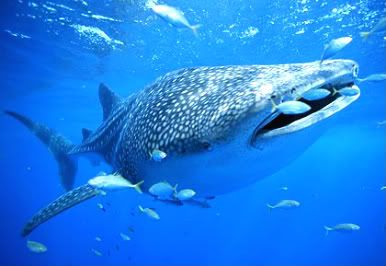
Megamouth shark:
One of the rarest sharks, there have only been 43 recorded sitings. Ten of which were around the waters of Japan. (the first was found in Hawaiian waters)
It's diet consists of small fish and plankton. It's mouth is lined with small photophores to help lure its prey.
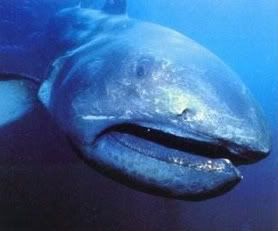
Wide-eyed Thresher Shark:
What is cuter than a shark with large glassy black eyes and a long tail?
NOTHING.
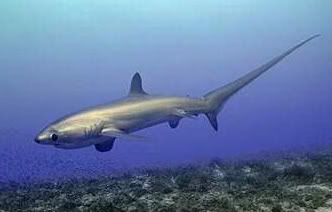
Basking Shark:
My personal fave! It is also a filter feeder like the Whale and Megamouth. It is the second largest shark after the Whale shark.
One major difference is that it has a glorious snoot. My own description would not do this creature justice:
Go here :
Wikipedia on Basking sharks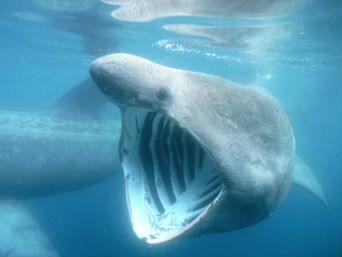
Wobbegong or Carpet Shark:
Bottom dwelling shark with barbs on the front of it's mouth. It is not dangerous, but if provoked or stepped on it can latch on to your ankle. *and apparently isn't easy to get off*

Here is an amazing child dressed up like a Wobbegong shark.
This photo makes me want to have children:
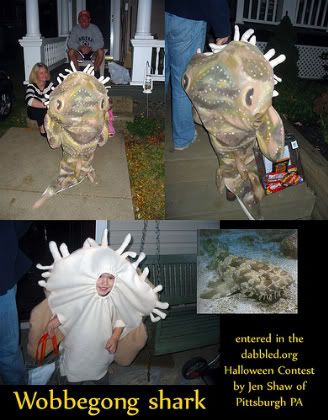
On Shark attacks:
*Of the 360 species of shark just don't swim with these: Tiger shark, Bull Shark, Great white Shark, and Oceanic White Tip reef shark. The first three have basically contributed to 99.8% of fatal shark attacks. (The Tiger and the Bull are the most dangerous to humans by far!
Here is what they look like for reference:
Tiger Shark:
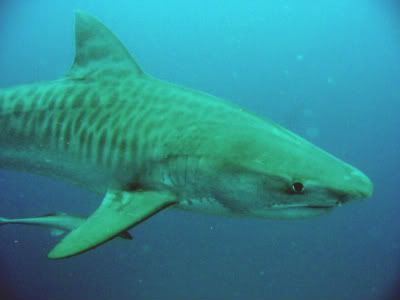
Bull Shark: *which is sorta non-descriptive to the un-sharkified eye, but they are so dangerous cause they can swim in fresh water as well as salt and have been found 2,220 miles up the Amazon River. They love shallow waters, and this may be a reason why it is considered the most dangerous of all the sharks.
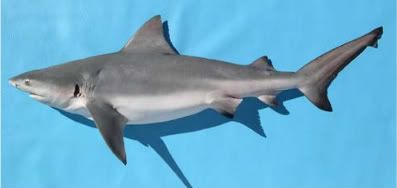
here is wikipedia info on this creature:
Bull SharkRemember- More people die from bee stings and lightning strikes than sharks.
Now you know a little bit more about sharkies that you did before!
Meet one!

